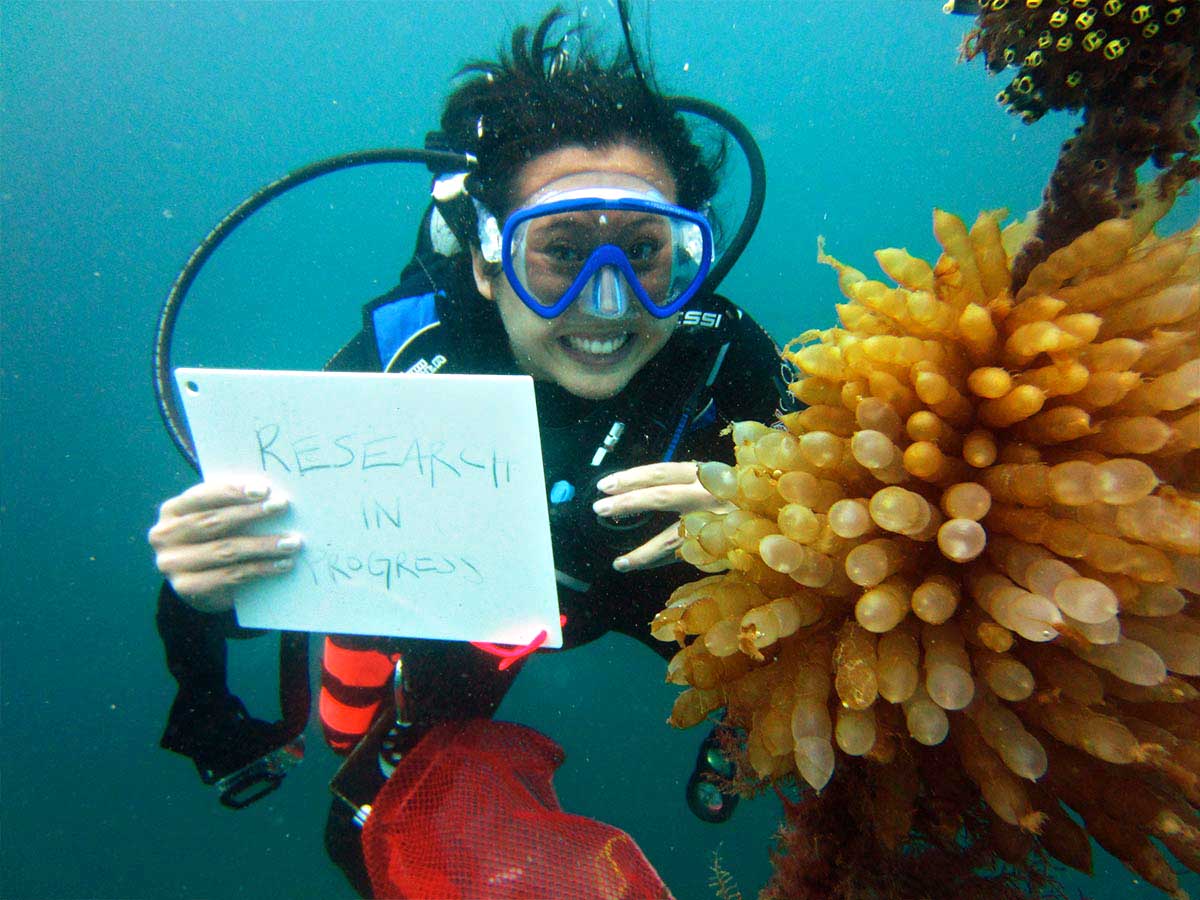COURSE AUTHOR
Samantha Cheng

Dr. Samantha Cheng is a biodiversity scientist at the Center for Biodiversity and Conservation (CBC) at the American Museum of Natural History. Her interdisciplinary research in conservation draws from the biological, social, and computer sciences to understand connections between nature and human well-being in global coastal communities, to investigate what drives marine biodiversity, and to build tools and assessments for evidence-based conservation decisions.
As a child growing up in Brookline, Massachusetts, Cheng loved aquariums and going to the ocean. As an undergraduate at Scripps College, she brought an interdisciplinary approach to her study of biology, an approach that she continued to follow in graduate school at the University of California, Los Angeles. “While I pursued a PhD in population genetics, I was always trying to figure out how to pursue my interests in areas outside of just the biological and ecological aspects of conservation. I wanted to understand people’s relationship with nature, and how nature, its ecosystems and resources, have influenced human societies and cultures and stories,” she says. “I was lucky to find mentors who gave me the time to do those explorations and to branch out across the disciplines that have shaped my research career today.”
Cheng joined the Museum after working in conservation science for more than a decade, using population genetics and genomics to investigate diversification in marine ecosystems of Southeast Asia and California. She specializes in examining evolution and conservation genetics of cephalopods. “Most of my fieldwork involves visiting local markets across the world and diving on shallow marine ecosystems looking for squid and where they spawn,” she explains. “My favorite part is being at the fish market early in the morning and seeing the fishers bring in the day’s catch—the variety of things that are caught, what’s considered a local delicacy, and learning about fishing techniques and how people cook squid across the world from the folks at the market.”
Cheng has also worked extensively in conservation policy, partnering with government agencies, non-profits, multilateral institutions, and foundations to evaluate the impact of conservation on ecosystems and human society. Her recent policy work includes assessments of the links between forests and poverty alleviation, the impact of wildlife trade, and links between conservation and human well-being. She currently runs two online, open-access tools to facilitate assessing and accessing evidence for conservation decision-making. And she recently co-founded and co-directs the Conservation Solutions Lab, a multi-institutional initiative aimed to design evidence-informed approaches to community engagement in biodiversity conservation.
The aspect of her work that Cheng finds most important, she says, is the chance it gives her to collaborate with all different types of stakeholders and partners. “To develop and implement solutions for sustainability, we need to make sure that all perspectives are reflected, so that the solutions don’t just benefit part of global society. The ability to integrate important questions regarding equity and well-being into evidence-based decision making for conservation is absolutely vital.”
Cheng still has a deep and abiding passion for all things cephalopod. “I’m so glad I have the chance to work on them at the Museum, and share super intriguing and fascinating facts about them with the public,” she says—as she does in this video and in this episode of the podcast “Science Rules! with Bill Nye.”